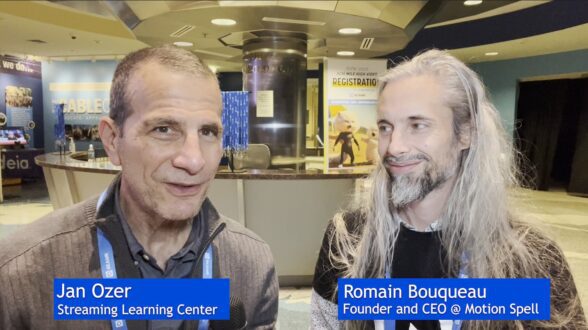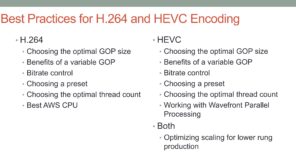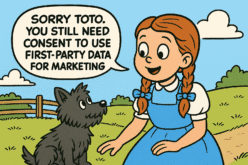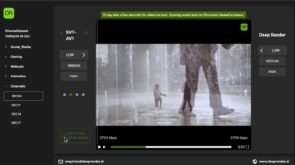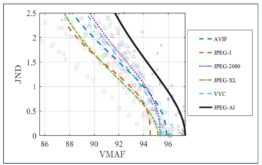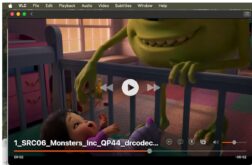I sat down with Romain Bouqueau, Founder and CEO of Motion Spell, at Mile High Video 2025 to discuss the latest advancements in GPAC, low-latency streaming, and AI integration. We discussed Motion Spell’s work on packaging technology, its role in low-latency streaming, and the challenges and opportunities of building custom language models for multimedia tools. Romain also shared his thoughts on the importance of Mile High Video as a developer-centric event.
You can watch the interview on YouTube here, and it’s embedded below. Some of Romain’s comments are edited slightly for readability.
Contents
GPAC’s Versatility and Industry Impact
Romain began by explaining how GPAC is used across various applications, from multimedia packaging to low-latency streaming. He emphasized its adaptability, noting, “GPAC is a multimedia framework that is mostly used for packaging, but it’s also much more than that.” He highlighted GPAC’s importance in academic research as well as in commercial deployments, where it helps companies manage complex video workflows efficiently.
According to Romain, one of GPAC’s unique aspects is its modular design, which allows users to tailor it to their specific needs. “We focus on making the tools flexible, so you can customize your workflow however you want,” Romain explained. This flexibility makes GPAC suitable for a variety of use cases, from packaging video content to supporting advanced streaming scenarios.
Romain also mentioned that Motion Spell presented two research papers at Mile High Video: one on ultra-low latency transmission using adaptive request patterns and another on reducing carbon footprints through multicast technology.
Low-Latency Streaming and Scalability
A significant part of our discussion focused on GPAC’s role in low-latency streaming. Romain explained how GPAC optimizes streaming performance by minimizing server requests, making it highly scalable for live video applications. “We’re working on ultra-low latency, and one of the ways we achieve that is by reducing the number of requests to the server,” he said.
This approach benefits large-scale live events, where minimizing latency and ensuring scalability are crucial. “The fewer requests you make, the more scalable your solution becomes,” Romain noted. This strategy allows GPAC to support high-demand live-streaming scenarios while maintaining low latency and high quality.
Integration with GStreamer
Romain also mentioned GPAC’s recent integration with GStreamer, a popular open-source multimedia framework. He clarified that GStreamer approached Motion Spell to integrate GPAC’s packaging technology to enhance its capabilities. “They came to us because they needed a better packaging solution,” Romain explained. “We have a good reputation for that, so it made sense to work together.”
This integration allows GStreamer users to leverage GPAC’s advanced packaging tools, expanding the functionality available within the GStreamer ecosystem. By filling a technology gap, Motion Spell is helping GStreamer improve its multimedia processing and delivery capabilities.
AI Integration and Custom Language Models
Romain shared Motion Spell’s ongoing investigation into integrating AI and custom language models into GPAC’s documentation tools. He noted that the goal is to enhance user experience by providing more intelligent and context-aware documentation. “We’re investigating the idea of using small language models to help with GPAC documentation,” Romain said.
He emphasized that these language models would be purpose-built for GPAC, making them more relevant and efficient than general-purpose models. “The idea is not to create a general AI but to focus on a model that understands GPAC’s specific needs,” he explained. This approach would provide more targeted assistance to developers using GPAC’s tools.
Romain acknowledged the challenges involved, particularly in training and maintaining a small, efficient language model. However, he remains optimistic about the potential benefits, noting, “If we can make it work, it will be a big help for our users.”
Reducing Carbon Footprint with GPAC
We also discussed GPAC’s role in reducing the carbon footprint of video streaming. Romain explained how optimizing packaging and streaming workflows can lead to significant energy savings. “One of our focuses is on reducing the carbon footprint. By making packaging more efficient, we can lower energy consumption,” he said.
This focus on sustainability is becoming increasingly important as streaming volumes grow. Romain noted that by minimizing resource usage, GPAC helps companies reduce their environmental impact while maintaining high-quality video delivery.
Importance of Mile High Video
We closed by discussing the conference itself. Romain emphasized the significance of attending Mile High Video, calling it one of the most valuable events for video technology professionals. “Mile High Video is where all the technical experts come together,” he said. “It’s not about marketing or sales; it’s about real technology discussions.”
He appreciated the event’s focus on in-depth technical presentations and networking with industry peers. “It’s a great place to learn and also to share what we’re working on,” Romain noted. This collaborative environment allows innovators like Motion Spell to stay at the forefront of video streaming technology.
 Streaming Learning Center Where Streaming Professionals Learn to Excel
Streaming Learning Center Where Streaming Professionals Learn to Excel

